|
This article was contributed by Peter Cartledge in 2012. * Well, where does it all begin? I didn't know it at the time but it all started for me in a town called Bad Oyenhausen in Germany which at the time was the Head Quarters for the British Army of the Rhine. I had been drafted there as a "statistical clerk” and found that I was part of a team keeping records of War Office Controlled Stores, Vehicles and believe it or not VD Statistics. I manage to avoid the latter but I did, however, work on the other two and what did we use to maintain our records? Nothing less than Hollerith Punched Card equipment! Hollerith (BTM as its British arm was known) and Powers Samas (more of them later) merged some time later to form ICT which then became ICL & then Fujitsu. The equipment we used had followed the British Army throughout the invasion on D-Day and was still functioning well which is just as well because we didn't have travelling engineers! We just had mechanical 80 column card punches, card sorters and tabulators (printers). For the benefit of the younger readers, copies of two 80 column punched cards are shown here. 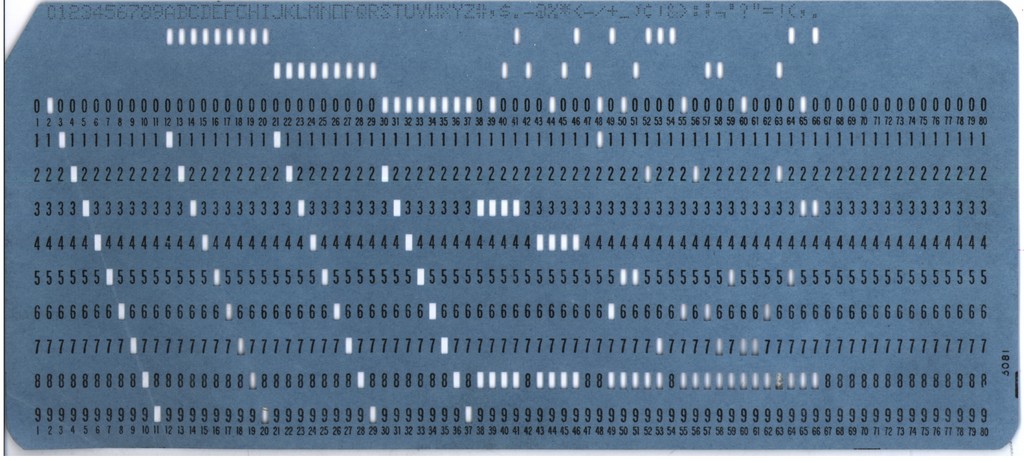 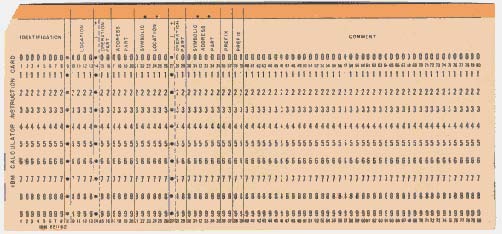 These cards came in different sizes but, I suppose the most common were these 80 column ones and a much smaller 40 column version. Each card was divided into groups of columns according to the needs of a particular job. For example, in a sales invoicing application, columns 1- 6 could be for account number, columns 7 – 20 for account name, 21 – 25 invoice number & columns 26 – 30 amount. From top to bottom there were 12 rows and, as can be seen, ten of them are numbered. The other two (overpunch rows) were used to allow alphabetic characters to be punched by using a number position PLUS one or other of the overpunch positions.
I believe that punched cards first came into use for the analysis of the Census in the United States in 1890. However they arrived, they provided a powerful way (in their day) of analysing mass data quickly. The idea for the cards probably came from the Jacquard looms which had been using a form of punched card for the control of looms since the early 1800s. Once a lot of data had been entered on cards, they were then sorted into required order/orders and printed on totally mechanical tabulators (i.e. wires sensed holes in cards & then more wires passed the information to print positions on the print head. Examples of a Powers Samas sorter and tabulator are shown here. 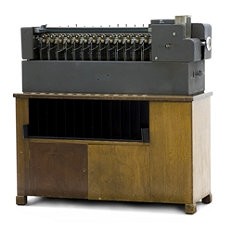 Powers Samas 80 col card sorter These machines operated at quite a high speed (I think 300 cards per minute) and woe betide you if there was a jam. Jams did happen quite frequently if the cards were not properly stacked and, of course all the damaged cards had to be repunched. Curses all round!
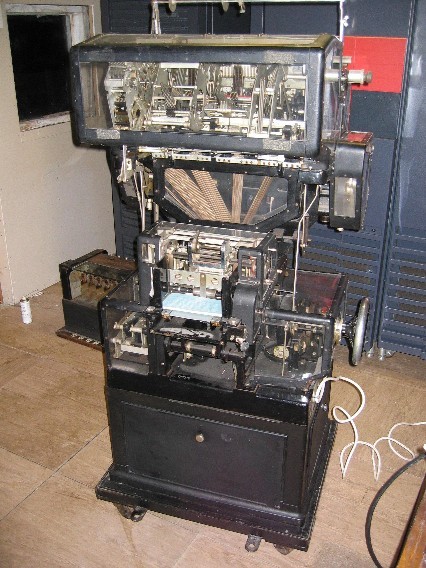 Powers Samas 80 column tabulator
The punched cards were fed in via a hopper (left of the big wheel) & the holes were read by a connection box (big "Y” shaped box in the middle) which had at least one wire for each hole in each column of the card. These led to the print unit at the top. Really they were masterpieces of engineering. By modern day standards it was all a very laborious procedure but, in a way the whole process led the way for the development of computers in business. Companies needed faster and faster information.
To get back to my job, I had to maintain and analyse details of ALL vehicles in Germany at the time and we had some 150,000 to account for. We needed to report, say, on a particular vehicle type and where they were located. We also had to record all vehicle movements. You can imagine our problems because we were dependent on records supplied by a very large number of army units who didn't really care about the quality of their data. A particular problem was the vehicle number. This was recorded on three different locations on the vehicle and, of course all three SHOULD be the same but, if the vehicle had been in the workshop for repair it was common for the numbers to differ. 3How, then, could we cope when a vehicle was recorded as leaving a unit under ONE number and being received by another with a different one? At least life was never boring. One part of my job was to visit a number of huge vehicle parks (usually airfields) and check their records. What a problem! As you moved away from the admin. office on these airfields, the vehicles had lost more & more of their parts so at the perimeter they were often no more than a chassis. Well, that's enough about old fashioned data processing. Fast forward 5 years while I caused chaos at Barclays Bank. I then joined a company in Manchester which brought me face to face again with Hollerith. This time it was in the form of an EMP (Electronic Multiplying Punch). Again based on punched cards, it could read numbers from sets of columns, carry out mathematical functions & then punch the results back into the same card (or another one if required). We really though this was MAGIC! It did, however, show me the way things were developing and, of course, at this time 1956/7 things were really happening on the computer front although the majority of development was in scientific rather than business areas. Then the light dawned for me. I saw an advert for people to join a new COMPUTER DEPARTMENT at British Overseas Airways Corporation at Heathrow. I got the job so off to London Airport I went. It proved to be a very good move. They were just preparing to receive their FIRST computers – a pair of Powers Samas PCC computers (would you believe – PCC stands for Program Controlled Computer). 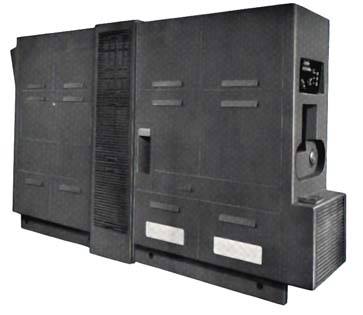 The Powers Samas PCC computer By modern standards these were neolithic but, to us at BOAC, they were superb except that, while they were being installed, a fault was found in a batch of valves (yes, they were valve machines) so a team of engineers descended on us and stripped out all the valves on the basis that it was quicker & cheaper than trying to find the faulty ones.
We had another crisis one day – the computers had been installed in a special room with ducting & false floor – nothing but the best! No cables lying around the floor. This was fine until there was a flood on the floor above us & we came in to find a lake. Well, all the wonderful new floor became part of the problem and we had to gather together all the heater fans we could muster & blow hot air through the ducts. At the same time, of course, we all set to with mops, buckets & any cloths we could find. These machines were programmed by fixing a set of rivets in a large board (in the box just by the ladies skirt in the picture). Each application needed its own unique program board (or maybe more than one for a complex application such as payroll). High speed memory was magnetic cores (VERY limited in size & in 1959 it cost about £1.00 per character) and mass storage on a magnetic coated drum. My memory fails me a bit but I think the capacity was about 250,000 bytes (could have been "words”). Input and output was on punched cards and the machine had the clever ability (under program control) of offsetting or inverting cards under specified conditions! Printed output was still on the old tabulators. AND THIS WAS ONLY 60 YEARS AGO! On these machines we serviced all the major applications at BOAC – payroll, GPO mail systems (a huge source of income), all flight timetables and flight pricing. My particular concern was payroll and we paid a total of 22,000 employees some weekly & some monthly. At that time it was not uncommon for flight crew to be paid more in expenses than salary (perhaps that is where our MPs got the idea from!). Computer development was gathering pace & it was not long before our trusty PCCs were proving inadequate for our needs but, unfortunately, our management at the time practiced the "mushroom culture” - keep them in the dark and pile loads of s*** on them (meaning the staff. I only discovered this from a friendly ICL salesman who let slip that an order had been placed with IBM. He also told me of an interesting job with Dorothy Perkins, ladies wear chain who were just venturing into the computer world. Being very disenchanted with BOAC management, I took the job as Computer Manager and never regretted it. A postscript to my days at the airline. Some time later I visited BOAC to meet some of my old friends. The IBM machines had arrived – two huge IBM 360s which I am told cost £1,000,000 each plus a third which was just there as standby because the work being done was so critical to the business. (shades of RBS/NatWest in June 2012) So, off to a most rewarding five years. Dorothy Perkins were then a private company owned by the Farmer family from Leicester and their Finance Director was a David Roxburgh who proved to be one of the best bosses I ever had. He had the vision to see that computers were vital to a business like theirs but, more importantly, he knew that the benefits would come from using these machines, not to do payroll & sales & purchase accounts but to tackle the prime problems of stock control & distribution. 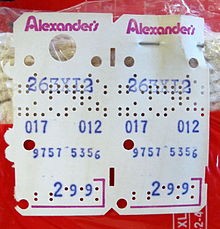 The company had been a pioneer in the use of Kimball tags (see above) for some years for stock control purposes and had been using them in conjunction with Power Samas equipment. The Kimball tags from merchandise were converted into conventional (40 column) punched cards & then processed in the normal way through card sorters and tabulators. We realised that this system only recorded events AFTER they had happened& we needed the sales information to CONTROL branch stocks and supplies.
We approached ICL, IBM and an outsider – Compagnie de Machines Bull. This company had been a hidden gem for a number of years – it supplied punched card tabulators which processed 150 cards per minute when the opposition could only manage 80! Add to this the fact that they were offering a form of punched cards which could be marked by, for example, by branch staff and then converted automatically into conventional punched cards. This proved to be the major breakthrough and, after a bit of a struggle, they got the order to supply a Gamma computer. Unfortunately my memory fails me here and I cannot remember its number but it could have been a Gamma 10. It still depended on magnetic core memory with drums for mass storage but it also had Bull's version of high speed memory – nickel delay lines (see many references on the net!). We were very fortunate to get massive support from Bull but, in the main, the support was French speaking. However we got by. In fact the most skilful systems engineer wasn't French, he was from Eastern Europe somewhere. I can remember his name to this day – it was George Havelka. He had an amazing skill to listen to a system planning meeting, go away & come back with a computer solution. To cut a long story short, we developed an outstanding system for controlling the stocks of a group of almost 200 stores on a weekly basis. We were able to accept sales information from branches on the "marked” cards, process them and have replenishment stocks in most of the branches the following week. We could also determine for EVERY item how much stock each branch should be holding. It was a system before its time without a doubt and became a model for a number of other store groups. This system was designed to provide rapid replacement of stocks in stores so the turn round HAD to be fast. Branches were required to mark cards for each item of stock showing the quantity on hand. Special fibre boxes were designed to contain the cards and we approached the Post Office to determine latest postal times in every store location to ensure that we received the box on the day we needed it for processing. The branch then posted the cards which were passed through the system on receipt. We were then able to have the required goods loaded for that branch the same day & delivered the next. Unfortunately it never worked 100% but, in the main, we provided a virtually unbeatable restocking service to the branches We were able to integrate the Kimball tag system into this but, of course, it because secondary to our new computer-based system (known as SADIE - Stock Accounting and Distribution Information Equipment). Another progressive move was to paper tape input rather than cards for the Kimball tag data. David Roxburgh's aim was achieved – we never took on any conventional accounting systems. They remained on "steam” systems throughout my time. When the time came to look at a replacement for our Bull equipment, another unusual thing happened. Among the many people who approached us was a man called Hank Levy. He was working for Joe Lyons & co. (of tea shop fame). They had realised the potential benefits computers could provide but, unfortunately, none of the machines on the market at the time met their needs. So, what did they do? They formed their own computer manufacturing company and built the LEO computer. Hank was their leading salesman who had spent all his working life to date selling chocolate couverture for the company but, as he said to me, if you are a good salesman you can sell anything. Sadly he didn't get our order which went elsewhere. Five years after joining Dorothy Perkins I was persuaded to join the company selling the Kimball tag system (Litton Industries). It is not, perhaps well known, but the early trials of bar coding on products (which is now such an integral part of our shopping trips) took place at Litton Industries in the 60's. Even then the potential was seen and it was realised that Kimball tags would lose their place as a leading form of stock control. Financially I had made a good move but I found myself too far removed from real computing so, in 1967 I joined the new National Computing Centre in Manchester. This government sponsored (and funded) organisation was intended to support businesses both small and large in their use of computers. It was a favourite of Harold Wilson who came to open our new offices on Oxford Road, Manchester. The Centre was headed very successfully by Professor Gordon Black in its early years & did a huge amount of work in many areas, particularly education, systems design & development and consultancy. It also attracted some VERY talented staff (not me!). However it started to lose its way when Government (by then Conservative) seemed to lose interest & to cut off much of the funding. I suppose it is for others to judge whether or not we succeeded but it no longer exists in its original form. After five years at NCC I then joined NCR selling computers for them starting with their new electronic accounting machines, then mini computers & then their first venture into the desk-top market 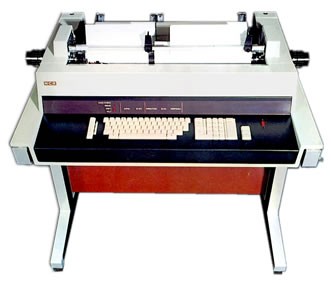 The NCR 299 This machine really showed the first major step away from the old mechanical accounting machines into the electronic era.. Programs were entered on to large cards (one or more per application) which were them read into the 299. To the best of my memory, if you switched the machine off, the program had to be reinserted (no memory!) As you can see, they had split print areas so you could print documents side by side! These were very successful but were very quickly superseded by much more sophisticated machines. One of these was the NCR 8250 – a full-blown computer.
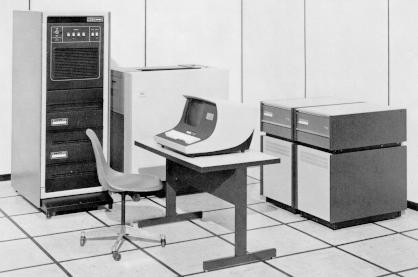 The NCR 8250 It had removable disc drives (two boxes on the right). These discs held 10 mbytes of data. We thought this was wonderful. How things have changed in 40 years?
While I was at NCR we also saw the appearance of the first ATM's and, of course, NCR were at the forefront of this technology My years at NCR were followed by a number of years offering systems design & implementation, largely on NCR machines. One of the NCR machines I covered was the Decision Mate V. 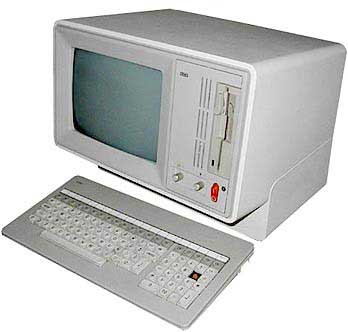 Decision Mate V This was a first class machine and suffered from the power of the IBM marketing machine otherwise I am sure it would have been much more successful. This was around the time of the progression from 8 bit to 16 bit machines which also meant that the operating system conflict came into the frame. CP/M , designed by Dr. Gary A. Kildall had been the most popular operating system for some time but, without getting too involved in what was an uncomfortable period, IBM decided to choose PC-DOS instead of CP/M even though I am convinced that CP/M was by far the better product. PC-DOS, of course became MSDOS & Bill Gates.
In 1987 I was persuaded by my daughter to try for a senior computing job at Manchester City Council. By this time I was in my late 50's & thought "no chance” but, due to antidiscrimination rules the application form didn't even ask for date of birth! I got the job and very quickly found myself leading THE PAYROLL SYSTEMS TEAM. Talk about the wheel turning full circle because my first real computing job was at BOAC dealing with payroll! I have had a wonderful working life with computers and feel that I have been very fortunate to be in at the start of quite a number of major developments – bar codes, ATMs, use of remote terminals, move from punched cards to paper tape & then to magnetic tape. © R.P. CARTLEDGE 27 June 2012 Creator : R.P. CARTLEDGE This exhibit has a reference ID of CH21820. Please quote this reference ID in any communication with the Centre for Computing History. |
|










